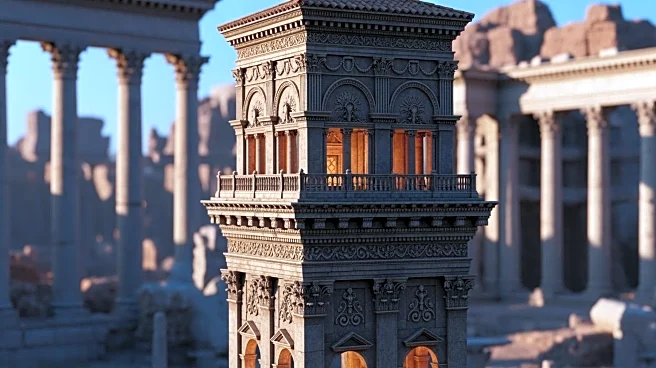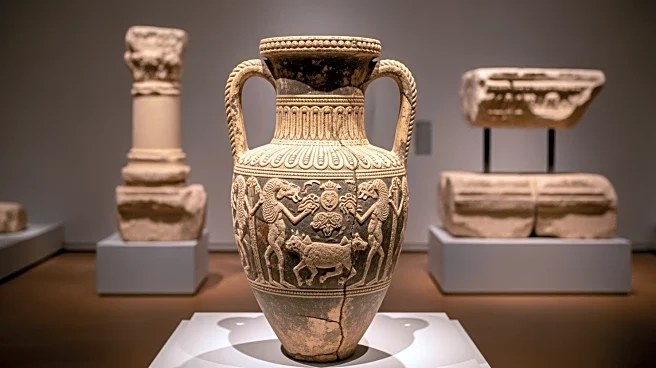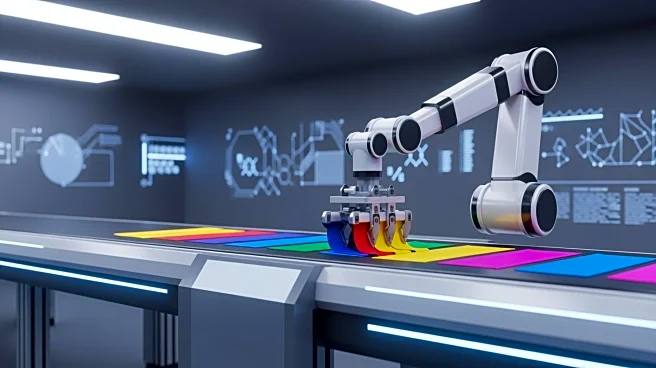What's Happening?
A recent study conducted by the Pompeii Archaeological Park and Berlin's Humboldt University has revealed that the ancient city of Pompeii may have been dominated by towers symbolizing power and wealth.
This discovery is part of the Pompeii Reset project, which uses advanced technology to create 3D reconstructions of buildings lost during the eruption of Mount Vesuvius in 79AD. The study focused on the House of Thiasus, a lavish domus likely owned by a prominent first-century politician, suggesting that a monumental stone staircase led to a tower offering panoramic views. The findings challenge previous assumptions that upper floors were used only for cheap rentals or slave quarters, highlighting their importance in understanding ancient life.
Why It's Important?
The study's findings have significant implications for the understanding of ancient Roman architecture and social dynamics. By reconstructing upper floors, researchers can gain insights into the daily lives and social structures of Pompeii's inhabitants. This challenges long-held assumptions about the use of upper floors and provides a more comprehensive view of ancient Roman society. The reconstructions also offer a glimpse into the architectural advancements of the time, showcasing the wealth and power of Pompeii's elite. This research could influence future archaeological studies and preservation efforts, emphasizing the importance of upper floors in historical analysis.
What's Next?
The Pompeii Reset project will continue to explore other buildings in the Regio IX district, using terrestrial and drone laser scanners, structured-light scanning, and detailed photography to build digital models. Researchers aim to reconstruct more upper floors to further understand the social dynamics and architectural innovations of ancient Pompeii. The findings may lead to revised interpretations of Roman architecture and influence future archaeological methodologies. As the project progresses, it could attract more attention from historians and archaeologists, potentially leading to new collaborations and funding opportunities.
Beyond the Headlines
The study highlights the ethical considerations in archaeological research, particularly the importance of preserving and accurately interpreting historical sites. By challenging misconceptions about upper floors, the research underscores the need for comprehensive analysis in archaeology. The use of advanced technology in the Pompeii Reset project also demonstrates the potential for innovation in historical preservation, offering new ways to engage the public and enhance cultural understanding. This approach could inspire similar projects worldwide, promoting the integration of technology in heritage conservation.












